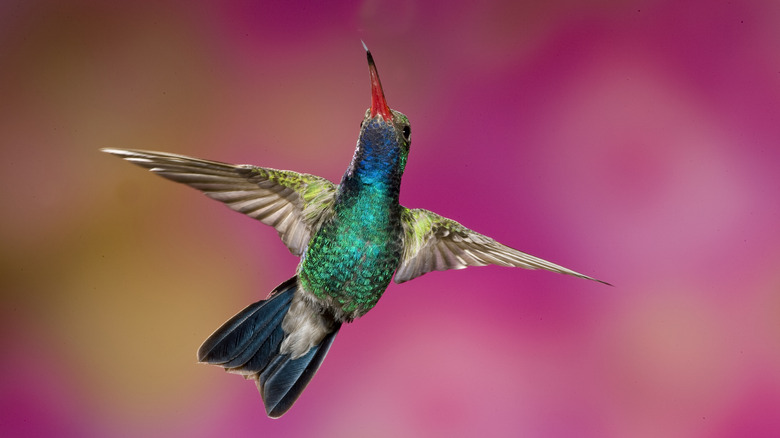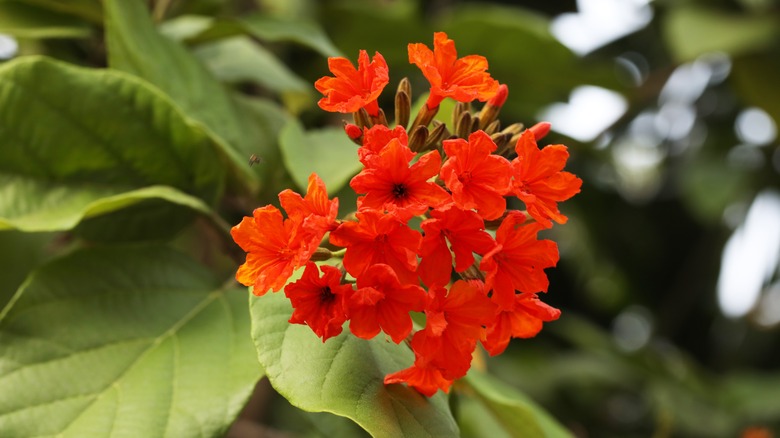Enhance Your Yard With An Orange-Flowering Native Tree Hummingbirds Love
If you love to watch hummingbirds zoom around your yard, you might wonder what kinds of feeders and plants to add to your landscape that will bring them around. But, there's another option to consider — trees that'll attract hummingbirds to your yard. For those living in zones 10b through 11, planting a Geiger tree (Cordia sebestena) is a lovely option. Not only does its evergreen leaves add a rich green to your yard but the tree blooms with gorgeous clusters of deep orange flowers that hummingbirds love, starting in the spring. The best thing about these blooms is that they appear on the branch tips and stay all summer long, so hummers can spot them easily and you can watch them feed as they dart from flower to flower.
Note that the Geiger tree can reach heights up to 30 feet and spread as wide as 25 feet, so be sure to give this slow-growing shade tree plenty of room. If you don't have the space but still want to provide the blooms for your hummingbird visitors, pot them in containers to control their size. Once the tree drops its clusters, they are replaced by small oval-shaped green fruits that turn white when ripe and are edible but aren't necessarily known for their flavor. When the flowers return in the spring, so too should the hummingbirds.
How to care for Geiger trees
The Geiger tree flourishes in either full sun or part shade and will grow well in various soil conditions, including clay and sand. It is also an evergreen tree variety that thrives in acidic soil — as long as it drains well. Try to keep the pH between 5.5 and 8.5, if you can. Those who live on the coast are in luck! This tree tolerates salt spray and is perfect for properties overlooking the ocean. While not typically a problem on the southern tip of Florida, it's important to note that Geiger trees won't tolerate frost. While, it has a high tolerance for drought, prolonged dry soil conditions could cause it to drop its evergreen leaves. So, be sure to water your tree if the soil completely dries out.
Prune this tree to help keep its desired shape and to allow for clearance underneath. Also, the Geiger tree's nature is to develop many trunks, but allowing it to do so instead of encouraging a single one could lead to breakage. The IFAS Extension of the University of Florida notes that you can train the tree to develop one trunk through early pruning, which will help strengthen its support structure overall. While you want to be on the lookout for occasional pests like caterpillars, mites, and scales, the real danger comes from Geiger beetles, which can defoliate your tree. Fortunately, this tree tends to bounce back well from an attack over time.

